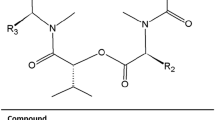Abstract
The occurrence of mycotoxins in small grain cereals and their retention in final products are serious concerns for food safety. Previously, we investigated the fate of deoxynivalenol and nivalenol in a Japanese soft red winter wheat cultivar during milling and we found that deoxynivalenol and/or nivalenol was readily distributed among flours for human consumption. In the present study, we analyzed the ergosterol concentrations in the milling fractions as an index of fungal biomass to elucidate the relationship between deoxynivalenol/nivalenol accumulation and fungal invasion into the grain, after the in-house validation of an analytical method for quantifying ergosterol in the resulting milling fractions (patent flour, low-grade flour, bran, and shorts). Using three samples with different levels of deoxynivalenol and/or nivalenol contamination, the contents of deoxynivalenol/nivalenol and ergosterol in the resulting milling fractions were evaluated. The concentration of ergosterol was always lowest in patent flour and highest in bran or shorts, indicating that most of the fungi is retained in the outer layers of grain (bran and shorts) even in highly contaminated grain. On the other hand, the concentrations of deoxynivalenol and nivalenol were similar in the low-grade and patent flours and only slightly lower than in the medium-level and high-level contaminated grains. Moreover, the percentage distribution of ergosterol was higher in bran than in other fractions in all cases, which differed from that of deoxynivalenol/nivalenol. This result indicates the diffusion of deoxynivalenol/nivalenol inside the grain that is independent of fungal invasion.


Similar content being viewed by others
References
McMullen M, Jones R, Gallenberg D. Scab of wheat and barley: a re-emerging disease of devastating impact. Plant Dis. 1997;81(12):1340–8.
European Commission, Scientific Committee on Food, Opinion of the Scientific Committee on Food on Fusarium toxins, Part 6: Group evaluation of T-2 toxin, HT-2 toxin, nivalenol and deoxynivalenol. 2002 (http://ec.europa.eu/food/fs/sc/scf/out123_en.pdf).
Rotter BA, Prelusky DB, Pestka JJ. Toxicology of deoxynivalenol (Vomitoxin). J Toxicol Environ Health. 1996;48(1):1–34.
Lee US, Jang HS, Tanaka T, Toyasaki N, Sugiura Y, Oh YJ, Cho CM, Ueno Y. Mycological survey of Korean cereals and production of mycotoxins by Fusarium isolates. Appl Environ Microbiol. 1986;52(6):1258–60.
Osborne LE, Stein JM. Epidemiology of Fusarium head blight on small-grain cereals. Int J Food Microbiol. 2007;119(1–2):103–8.
Seitz LM, Sauer DB, Burroughs R, Mohr HE, Hubbard JD. Ergosterol as a measure of fungal growth. Phytopathol. 1979;69(11):1202–3.
Axelsson BO, Saraf A, Larsson L. Determination of ergosterol in organic dust by gas chromatography-mass spectrometry. J Chromatogr B Biomed Appl. 1995;666(1):77–84.
Djajakirana G, Joergensen RG, Meyer B. Ergosterol and microbial biomass relationship in soil. Biol Fertil Soils. 1996;22:299–304.
de Sio F, Laratta B, Giovane A, Quagliuolo L, Castaldo D, Servillo L. Analysis of free and esterified ergosterol in tomato products. J Agric Food Chem. 2000;48(3):780–4.
Taniwaki MH, Hocking AD, Pitt JI, Fleet GH. Growth of fungi and mycotoxin production on cheese under modified atmospheres. Int J Food Microbiol. 2001;68(1):125–33.
Ng H-E, Raj SSA, Wong SH, Tey D, Tan H-M. Estimation of fungal growth using the ergosterol assay: a rapid tool in assessing the microbiological status of grains and feeds. Lett Appl Microbiol. 2008;46:113–8.
Miyagawa H, Umeda M, Sato T, Bandoh S, Nakamura S, Goto T. Single-laboratory validation of a method for ergosterol determination in cereals. Food Addit Contam Part A. 2009;26(2):201–6.
Kushiro M. Effects of milling and cooking processes on the deoxynivalenol content in wheat. Int J Mol Sci. 2008;9(11):2127–45.
Thammawong M, Okabe M, Kawasaki T, Nakagawa H, Nagashima H, Okadome H, Nakajima T, Kushiro M. Distribution of deoxynivalenol and nivalenol in milling fractions from Fusarium-infected Japanese wheat cultivars. J Food Prot. 2010;73(10):1817–23.
Yoshida M, Nakajima T, Tomooka T. Effect of nitrogen application at anthesis on Fusarium head blight and mycotoxin accumulation in breadmaking wheat in the western part of Japan. J Gen Plant Pathol. 2008;74(5):355–63.
Seitz LM, Mohr HE, Burroughs R, Sauer DB. Ergosterol as an indicator of fungal invasion in grains. Cereal Chem. 1977;54(6):1207–17.
Young JC. Microwave-assisted extraction of the fungal metabolite ergosterol and total fatty acids. J Agric Food Chem. 1995;43(11):2904–10.
Abramson D, Gan Z, Clear RM, Gilbert J, Marquardt RR. Relationships among deoxynivalenol, ergosterol and Fusarium exoantigens in Canadian hard and soft wheat. Int J Food Microbiol. 1998;45(3):217–24.
Pietri A, Bertuzzi T, Pallaroni L, Piva G. Occurrence of mycotoxins and ergosterol in maize harvested over 5 years in Northern Italy. Food Addit Contam Part A. 2004;21(5):479–87.
Lancova K, Hajslova J, Kostelanska M, Kohoutkova J, Nedelnik J, Moravcova H, Vanova M. Fate of trichothecene mycotoxins during the processing: milling and baking. Food Addit Contam Part A. 2008;25(5):650–9.
AOAC OMA, Appendix E: Laboratory Quality Assurance, 2005.
Perkowski J, Basiński T, Wiwart M, Kostecki M, Buśko M, Matysiak A. The effect of environmental conditions on ergosterol and trichothecene content of naturally contaminated oat grain. Ann Agric Environ Med. 2008;15(2):271–6.
Acknowledgments
This work was supported by a grant from the Ministry of Agriculture, Forestry and Fisheries of Japan (Research project for ensuring food safety from farm to table MT-3215).
Author information
Authors and Affiliations
Corresponding author
Rights and permissions
About this article
Cite this article
Thammawong, M., Okadome, H., Shiina, T. et al. Distinct Distribution of Deoxynivalenol, Nivalenol, and Ergosterol in Fusarium-infected Japanese Soft Red Winter Wheat Milling Fractions. Mycopathologia 172, 323–330 (2011). https://doi.org/10.1007/s11046-011-9415-9
Received:
Accepted:
Published:
Issue Date:
DOI: https://doi.org/10.1007/s11046-011-9415-9




